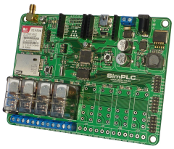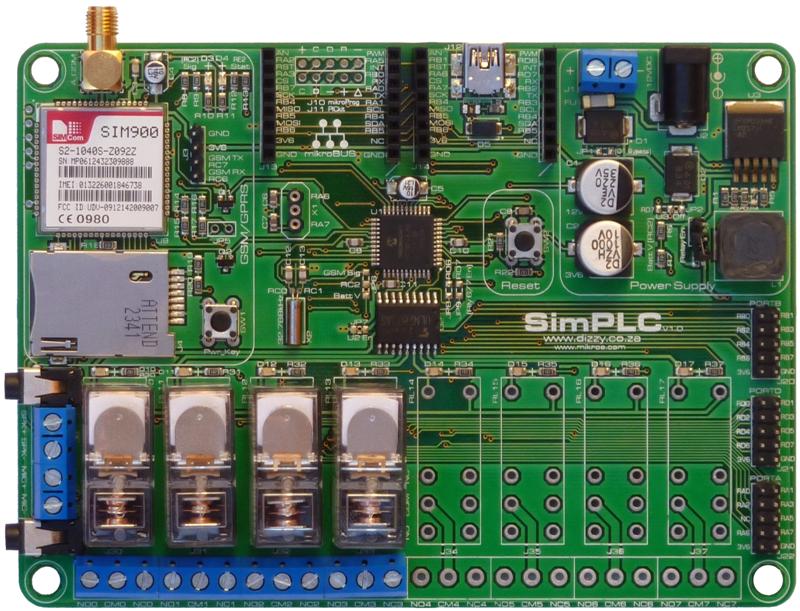|
|
| |
|
 | Search: |
|
|
 |

|
|
The SimPLC is a neat and compact board featuring up to 8 relays, a GSM/GPRS module, up to 8 opto-coupled inputs, RTCC (real-time calendar/clock) and USB. Develop your own code to turn it into an alarm system, remote control/monitoring device, or any other application you may find for it!
Note: This original SimPLC has now been replaced by the SimPLCv2. |
|
|
|
|
 Features
Features
-
Up to 8 Relays (4 included as standard).
- LED to indicate the state of each relay.
- Relays can be easily disabled via a jumper (LEDs still operational) during your development / debugging phase.
- SIM900 GSM/GPRS Module.
- 3.5mm jack and screw-terminal microphone and speaker connectors.
- Power and signal LEDs.
- Header for debugging UART communications with the module.
- Pwr_Key button for manually powering the module on and off.
- MikroElektronika-standard IDC10 connectors for Ports A, B and D; as well as two "mikroBus" connectors, used to easily add functionality by connecting any of a huge range of accessory boards (see "Related Items").
- Up to 8 opto-coupled inputs by using OPTO click boards.
- PIC18F46J50 microcontroller.
- 32.768kHz crystal included on-board, for running the PICs built-in RTCC (real-time calendar/clock).
- USB.
- mikroProg and PICkit programmer connectors.
- Comes pre-programmed with a fast USB-HID bootloader.
- Reset button.
- Switching power supply.
- Switches the 12V input voltage down to 3.6V.
- Input voltage readable by the MCU (for battery monitoring).
- LM2576 DC-DC converter can be shut down during standby for minimal power consumption.
- Board can be powered via USB during your development / debugging phase (relays should be disabled via the "Relay En" jumper).
Example Programs
Example programs are included with the board, helping you to get up and running with your project quickly.
These included examples programs demonstrating how to:
- Switch relays on and off.
- Read inputs.
- Work with the RTCC (real-time calendar and clock).
- Work with the GSM/GPRS module. A robust, tidy, flexible and easily extendable state-machine framework is provided, which already caters for:
- Switching the module on, setting it up, and waiting for network registration.
- Sending and receiving SMSs.
- Detecting and reacting to missed calls.
|
|

